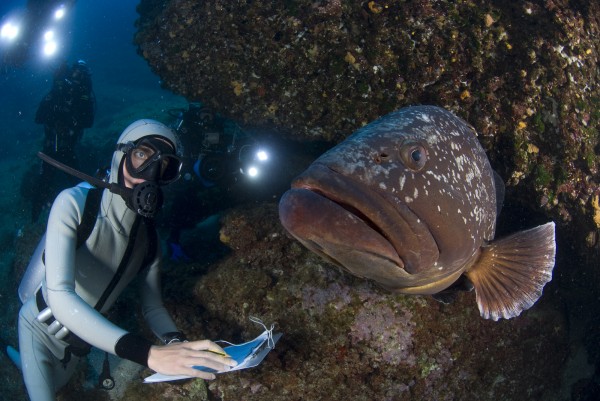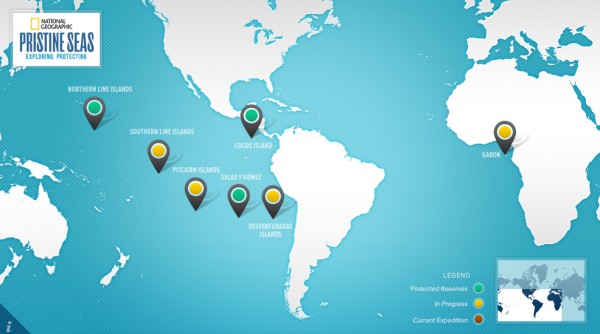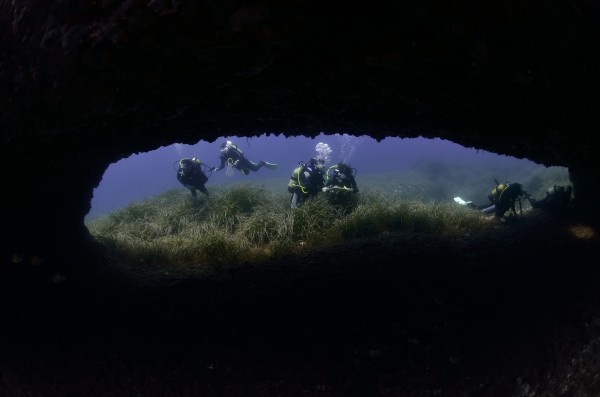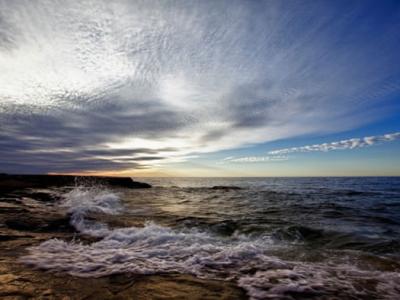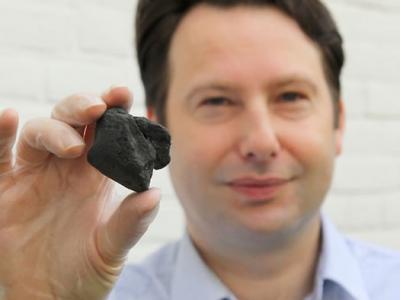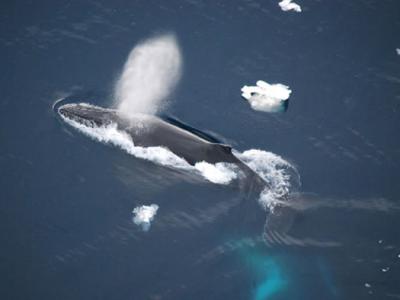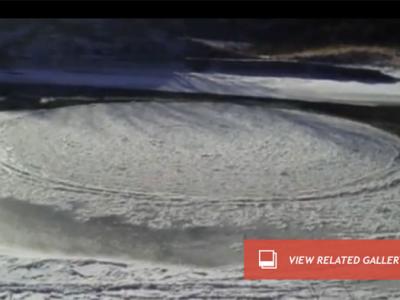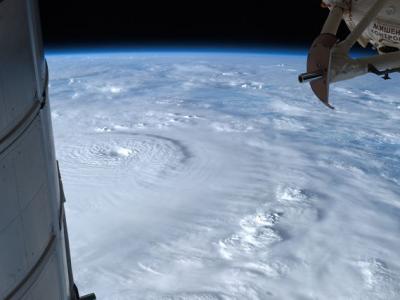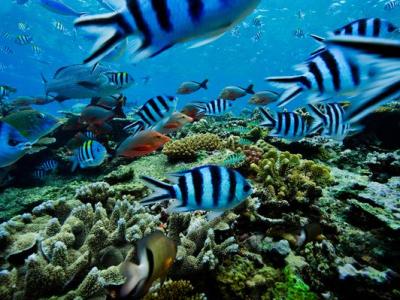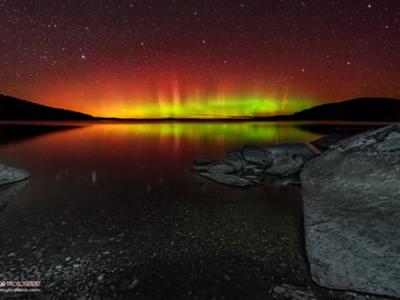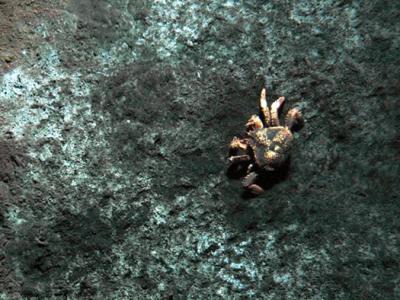New Research: Marine Reserves Can Stoke Local Economies
Pierre-Yves Cousteau comes face to face with a dusky grouper in Cabrera Archipelago National Park (Parque Nacional del Archipielago de Cabrera) in Spain. Photo by Enric Sala/National Geographic
On April 3, 2013, National Geographic Explorer-in-Residence Enric Sala and a team of colleagues from around the world published a scientific paper called “A General Business Model for Marine Reserves” in the journal PLoS ONE.
Building on the work of National Geographic’s Pristine Seas Expeditions (see clickable map below), the team analyzed available data to show that “marine reserves are an effective tool for protecting biodiversity locally, with potential economic benefits including enhancement of local fisheries, increased tourism, and maintenance of ecosystem services.”
The scientists demonstrated that the added value of marine reserves to local communities can make up for their initial cost in as short as five years. The team also developed a framework that others can use to estimate the value of a marine reserve in their area.
Ocean Views spoke with Enric Sala about these new findings.
Were you surprised to find that marine reserves increased economic opportunities?
No. I have seen it with my own eyes many times. So I decided to work with top colleagues on some modeling to determine how the economic effects of such reserves were playing out worldwide.
Could you break down the various benefits of marine reserves for us?
There are benefits inside and outside the boundaries of marine reserves. Inside fish and other marine life increase their biomass. Outside the reserve boundaries some of these fish spill over. There is also a release of eggs and larvae to nearby unprotected areas. This spill over replenishes local fish populations, which helps local fishermen.
Inside the reserve there is often a boost in tourism. There are few places where there are still lots of fish, so people flock to these places.
What we showed with the modeling is that a reserve’s value can be greater than its pre-reserve value in as little as five years. So reserves not only have ecological benefits in terms of protecting biodiversity, but they are also a good business.
Do you envision that for-profit funding of marine reserves may arise as a result?
Absolutely. We are working on another paper, including some fellow Young Global Leaders of the World Economic Forum, to put together a new business model to make marine reserves that are privately invested and privately managed. They can create jobs and bring a profit. I hope that this will eventually help scale up marine reserves globally.
Right now we have so few marine reserves partly because of reduced government resources. But if we can see marine conservation as a potential business that could be developed by local communities and entrepreneurs it’s a win-win.
Are there conditions under which the economic arguments for a marine reserve might not pan out?
Marine reserves are not the only solution, and they will not work equally well everywhere. But the question we need to ask is, knowing about the success stories we have so far, how can we replicate these bright spots elsewhere? We can find many reasons why they won’t work, but what we need to do is find ways to replicate successes we have seen elsewhere.
Your paper also outlined a general framework for people to use to estimate the costs and benefits of marine reserves. How could this be used?
We established a general framework that can be adapted to every local context. I think it’s pretty easy to use.
Like any other business, what you need to do is make a business plan. Ask what are the costs of a reserve, which are costs of management and opportunity cost (typically, loss of fishing revenue). Then you expect to have some increased revenue in fishing in the area in a few years and increase in tourism. So you can put together a business plan with projected cash flows.
Our paper shows that tourism is not going to be the savior everywhere. Some places will only benefit from fishing replenishment. But we also looked at ecosystem services, which are economic benefits of reserves from things like payments through carbon markets, or payments from governments for services like storm mitigation.
Divers exploring undersea life in the Freus Marine Reserve of Ibiza and Formentera (Reserva Marina dels Freus d’Eivissa i Formentera) in Spain. Photo by Manu San Felix
How much of the ocean is now protected? How much should or could be?
About 1.2% of the world’s ocean is in marine protected areas, and only a faction of that is in no-take marine reserves [where no fishing is allowed]. The UN (United Nations) Convention on Biological Diversity has a target of 10% of the ocean protected by 2020.
Scientific studies suggest that at least 20% of the ocean should be protected. That 10% is only one milestone, and it shouldn’t be the end point.
What do you think are the next challenges for marine reserves?
There are two types of marine reserves that need to be created, small ones managed by local communities and big ones managed by governments. We’re working with governments worldwide to help create very large reserves. But once local communities see the benefits they will all want to have their own local small reserves, like any business.
We also need a cultural change — we need to move away from the view that it is either conservation or development. Actually, we show that they go hand in hand.
Posted by Brian Clark Howard of National Geographic News in Ocean Views on April 3, 2013
